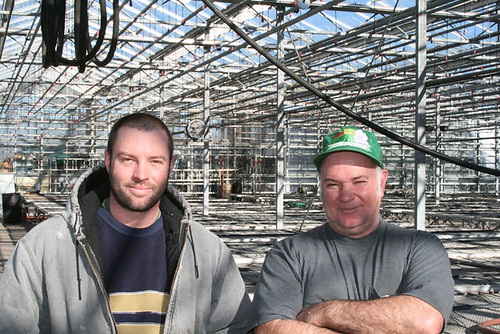
This winter, I had the opportunity to see an energy audit on a family farm near Amherst, Mass. Bruce LaFlamme and his son, Phil, had requested the audit to help them find ways to conserve heat and better insulate their greenhouse, where they grow vegetables year-round, as well as other plants during certain seasons.
The timing was perfect for the LaFlammes to show their operation to John Bartok, who was doing the audit for the Massachusetts Farm Energy Program, a joint project of the Massachusetts Dept. of Agricultural Resources, USDA’s Natural Resources Conservation Service (NRCS), Berkshire-Pioneer Resource Conservation & Development Area and Patriot Resource Conservation & Development Area.
With fresh snow and below-freezing temperatures, the weather allowed Bartok to clearly see how the LaFlammes are currently using energy. The auditor’s review told the LaFlammes what they are already doing right to improve their heating and energy efficiency, while also showing them where they can cut costs.
The LaFlammes have made a variety of improvements over the years, such as converting to a more efficient and cost-effective greenhouse heating system. They are able to put the money saved with these changes back into the business.
But there always seem to be more improvements a farm can make to save money, and that’s where the auditor came in. After Bartok’s thorough inspection, he and the LaFlammes had a lengthy discussion about other changes the farm could make to receive the technical and financial assistance from NRCS. As someone who was not familiar with this process, I found it fascinating and informative.
Most of all, I found it encouraging. Even in the best of times, family farming is a tough business, and these audits are a great way for NRCS to help farmers, ranchers and other land managers not only save money, but also conserve energy, benefit the environment and reduce greenhouse gas emissions. As a result, everybody wins.
Learn more about NRCS on-farm energy audits.
Follow NRCS on Twitter.
Check out other conservation stories on the USDA blog.
